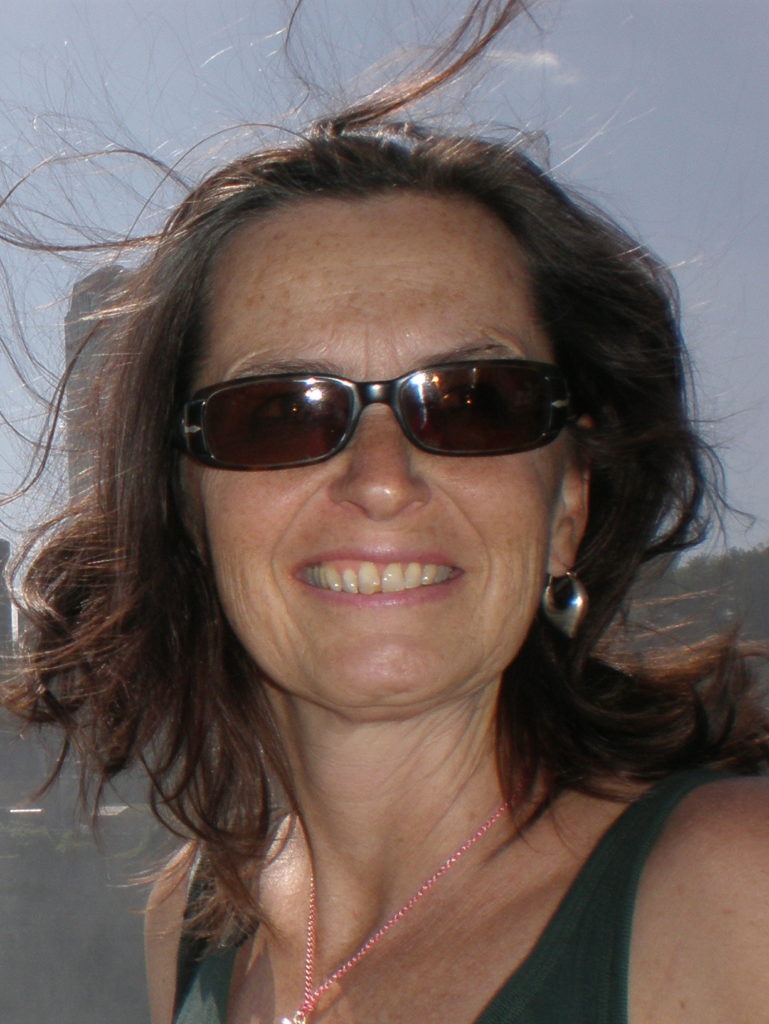
From the very beginning of my career I strongly believed that research has to be aimed at the species’ conservation and that the general public has to be involved. I am a biologist and a journalist; I have been working with research and outreach on cetaceans for over 30 years. I started my career working for monthly nature magazines and nature documentaries and I have been part of Tethys Research Institute for the safeguard of marine mammals in the Mediterranean since its foundation. I am also in charge of the scientific outreach of the Institute.
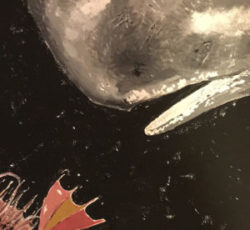
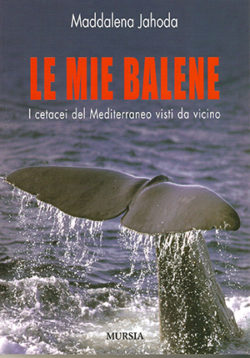
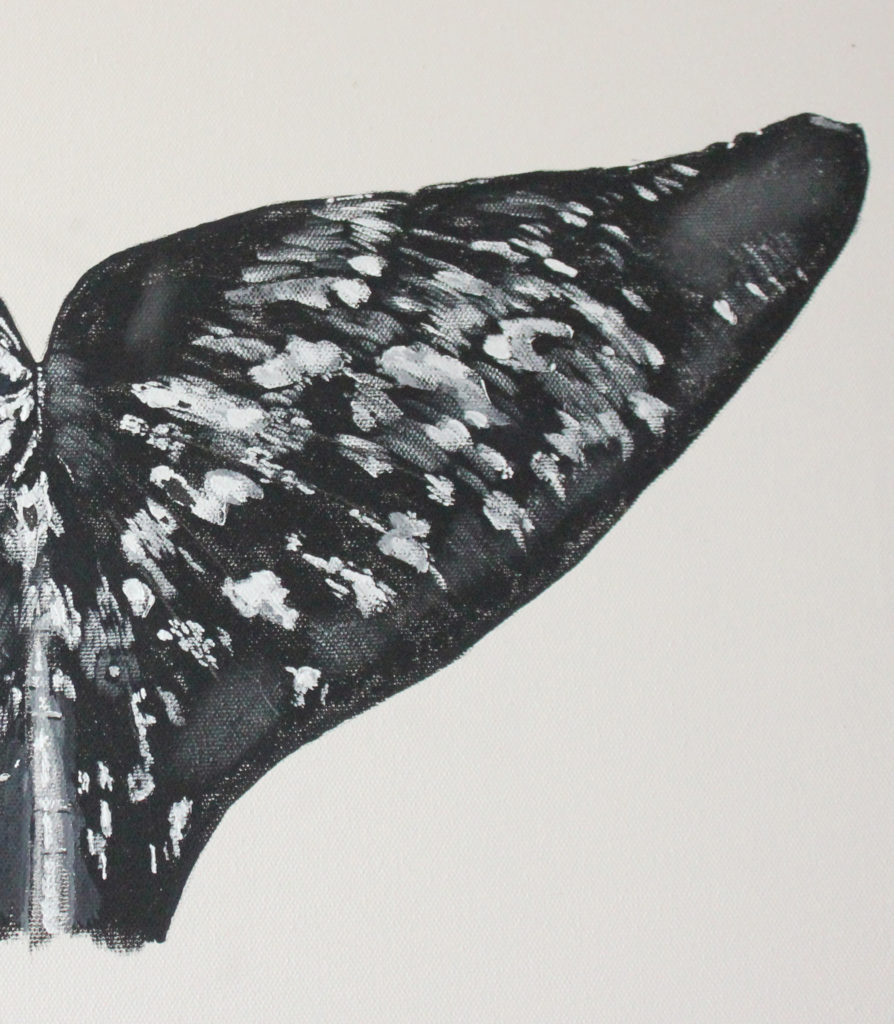
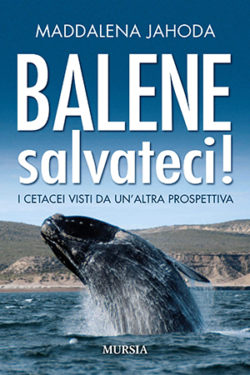
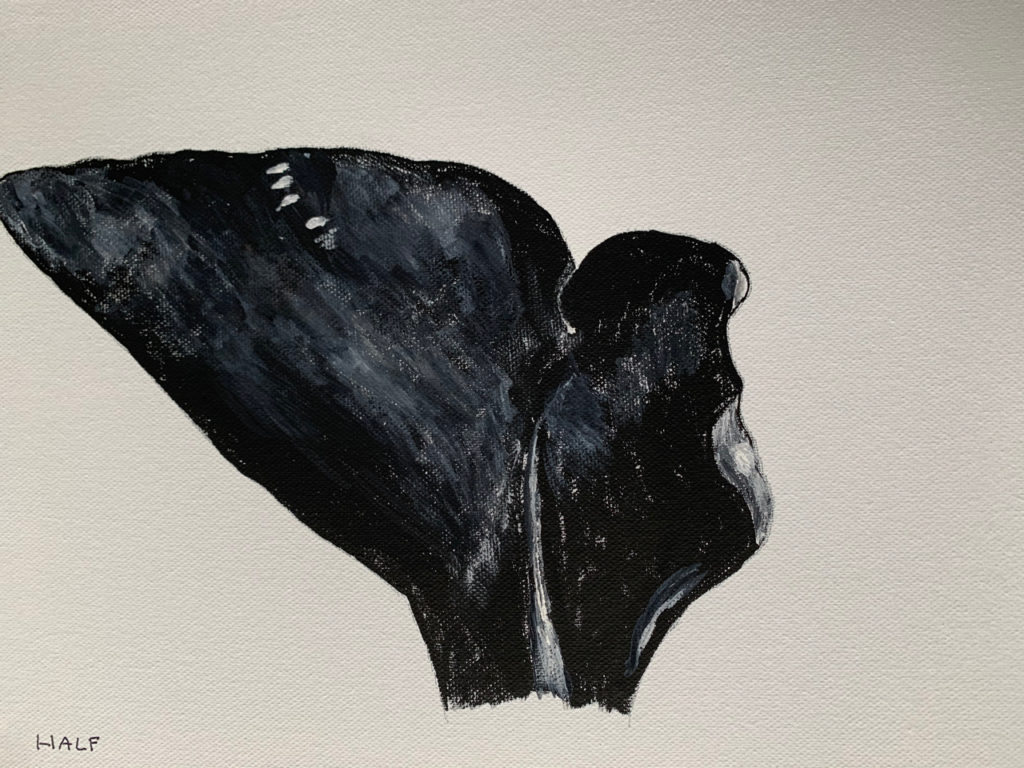
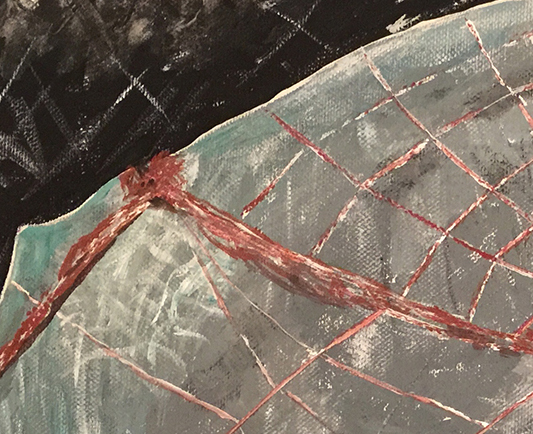
I am the author of outreach books on cetaceans and sharks. The most recent are “Le mie balene, I cetacei del Mediterraneo visti da vicino” (“My whales, a close up of cetaceans of the Mediterranean”) published in Italy by Mursia and the brand new one “Whales, save us!”.
Here are my latest projects: a new book and some artwork aimed at an alternative education of the public.
WHALES, SAVE US! A different perspective on cetaceans
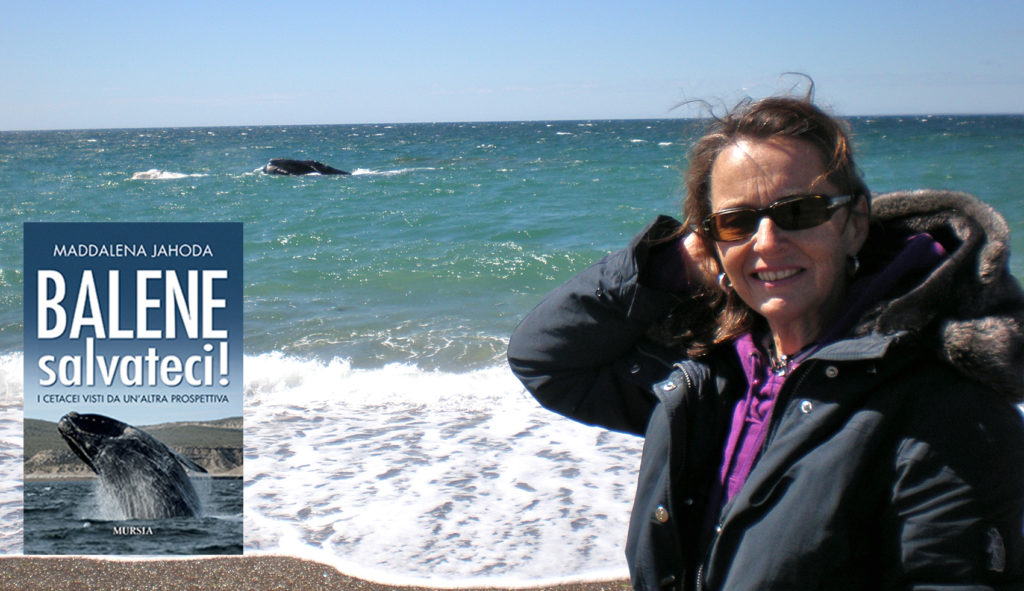
“In a time of climate change we have discovered whales have an active role in shaping the environment. Cetaceans can be our best allies”.
Why save whales? Actually, today whales should be saved (also) because of completely new reasons. According to most recent research, large whales play a role as “environmental engineers” and they could help us even fight the global climate change. Every day we are discovering that their lives are more similar to ours than we thought: there are bonds that last a lifetime, a culture passed on by grandmothers; there are friends calling each other by name, and the death of a relative is an upsetting event. “Balene salvateci!” (“Whales, save Us!”), winner of the Premio Marincovich 2021, tells the stories of animals that often intertwine with ours, but the book is also a journey through the evolution of their relationship with our species. Recently published in Italy, the book was born out of the author’s experience of over thirty years within the Tethys Research Institute, whose mission is scientific research just as much as outreach. Among anecdotes with the wide public which is not so well prepared in regards to whales and dolphins and the descriptions of study techniques, every once in a while, with a change of perspective, cetaceans themselves are given a voice. And they have a lot to tell us…
The book can be found on Amazon, paperback, or Kindle e-Book.
- INTERVIEWS ON ENGLISH MEDIA
- The Telegraph Days could be numbered for whale missing its tail as it roams the Mediterranean, June 2020
- Daily Mail Whale without a tail: Researchers spot 65-foot emaciated titan , June 2020
- New Scientist An injured fin whale with no tail has been found in the Mediterranean, June 2020
- ARTICLES IN ENGLISH
- The sad story of the flukeless whale
- The long journey of the fluke-less fin whale in the Mediterranean
WHALE-ART
Art inspired by research is possibly a more intuitive way to reach out to a wider public.
Paintings that tell science stories
In an attempt to go beyond just portraits, I developed a few “lines” of paintings inspired by research on cetaceans, especially conservation-aimed ones. The goal is to use them for exhibitions coupled to short lectures/explanations.
I favored whales and dolphins of the Mediterranean, both the regular and the occasional ones, in order to explain scientific findings, tell stories of individuals or trigger new perspectives. Themes are:
IMPERFECT CETACEANS: the eight regular Mediterranean species, each one represented by a specific individual, with its “imperfections”. For researchers, natural marks are an essential tool for studies; for the general public, looking at an individual animal may help form a powerful connection.
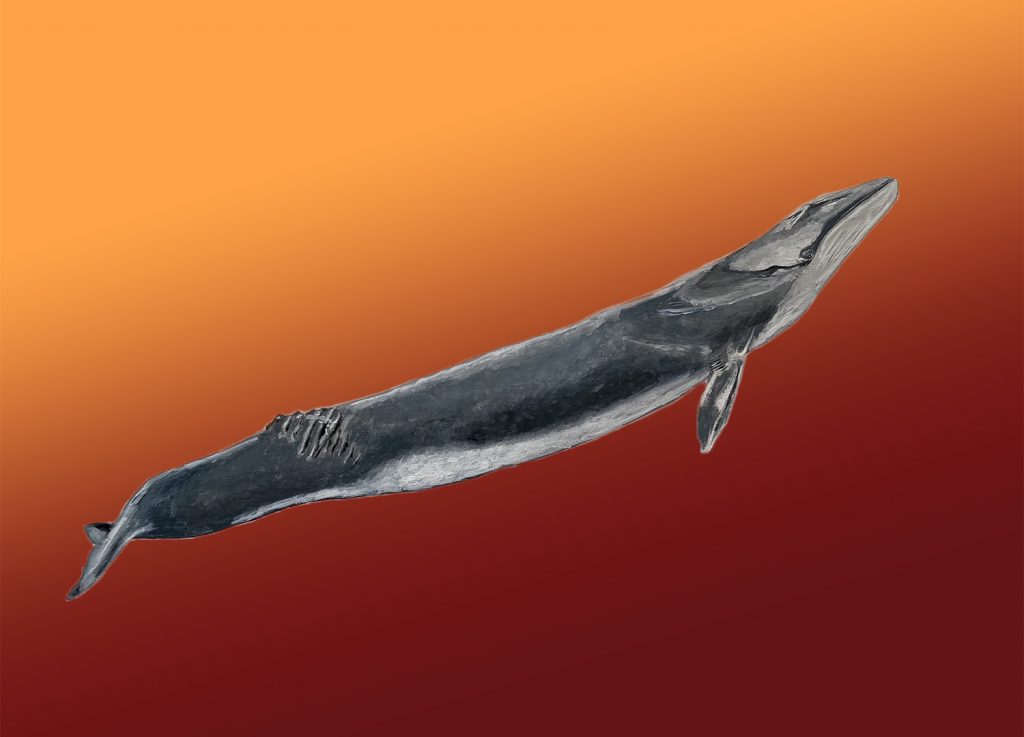
WHALE NEWS: some individuals have hit the headlines, such as Willy the gray whale lost in the Mediterranean, Codamozza the flukeless fin whale, or Zena, the orca whose baby died in the gulf of Genoa. I portrayed these individuals with the aim of telling their dramatic stories.
GLOWING WHALES: with a spray technique I intended to depict the relationship between large cetaceans and tiny particles such as nutrients for phytoplankton, which play an essential role in fighting the climate crisis.
SMILES. Audiences sometimes love dolphins because they seem to smile. I painted the “faces” of the Mediterranean species, highlighting what their actual look is like. This is to encourage the public to go beyond antropomorphic interpretations.
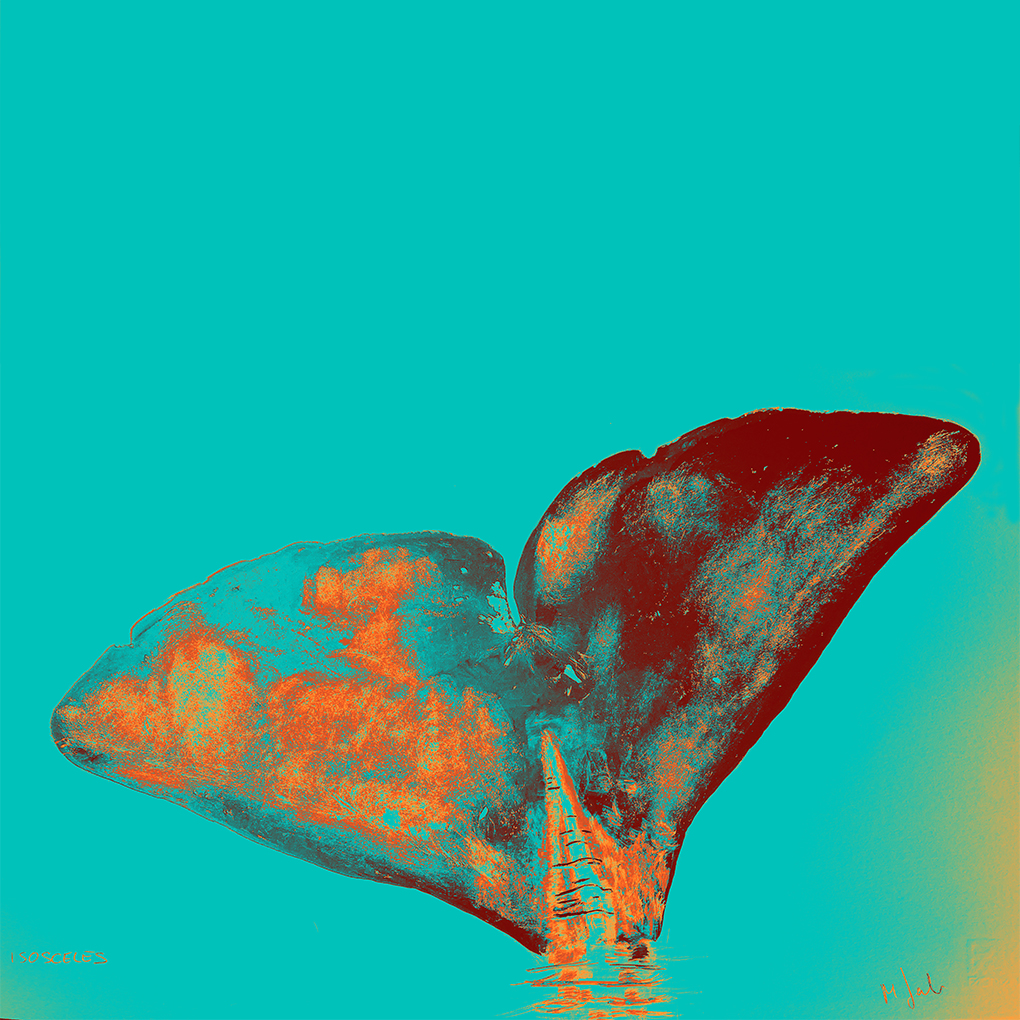
FLUKES OF LIGHT: every year I choose a few individuals sighted during the previous summer by the Tethys Research Institute, painting their flukes from pictures taken for photo-ID. By means of a mixed technique I superimpose electronic gradients to the basically almost black and white originals. The aim is to highlight that even cetaceans that live most of their life in deep dark water have a strong connection to the surface and the sunlight.
The ultimate goal of the paintings is to build a thought-provoking empathy with cetaceans, encouraging people to look at those iconic animals, and on their conservation issues, from a different viewpoint.
FLUKES IN THE DARK – installation
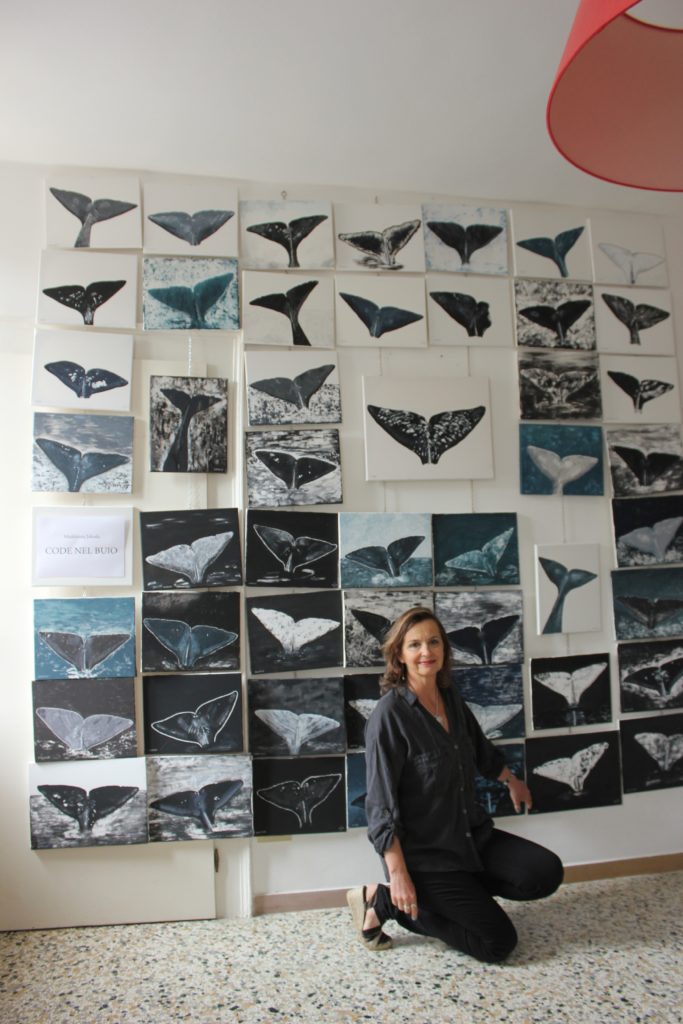
Sperm whales (Physeter macrocephalus) live in the Pelagos Sanctuary, NW Mediterranean, and it has been estimated that in the summer months about 50 individuals regularly reside in a core area of roughly 25,000 km2.
I have created an installation of paintings portraying the flukes of the 50 most frequently sighted individuals. Each fluke is based on the shape, notches and spots which allow individual recognition in the wild. With this said, I chose to privilege a more creative approach rather than striving to present an exact copy of the actual fluke.
A few additional signs tell, in a nutshell, the stories of selected individuals. The use of black guache, either for the fluke or the background, is to underscore that the whales’ future looks dark and uncertain. Furthermore, the number of paintings may seem impressive, but fifty it is not that many when it comes to an endangered population of whales. Each and every whale is unique, with its own “personality”, its place in the ecosystem, and its story, thus each one of them is precious and irreplaceable. If one is missing, the whole picture will never be the same any more.
THREATS DON’T COME FROM THE DARK
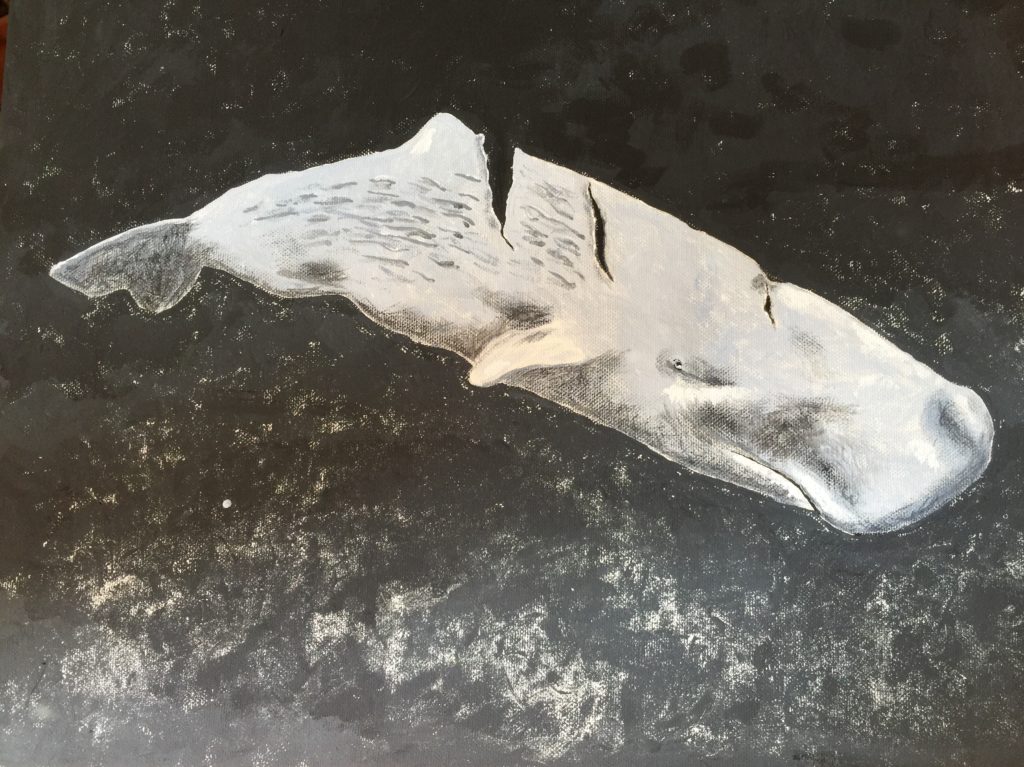
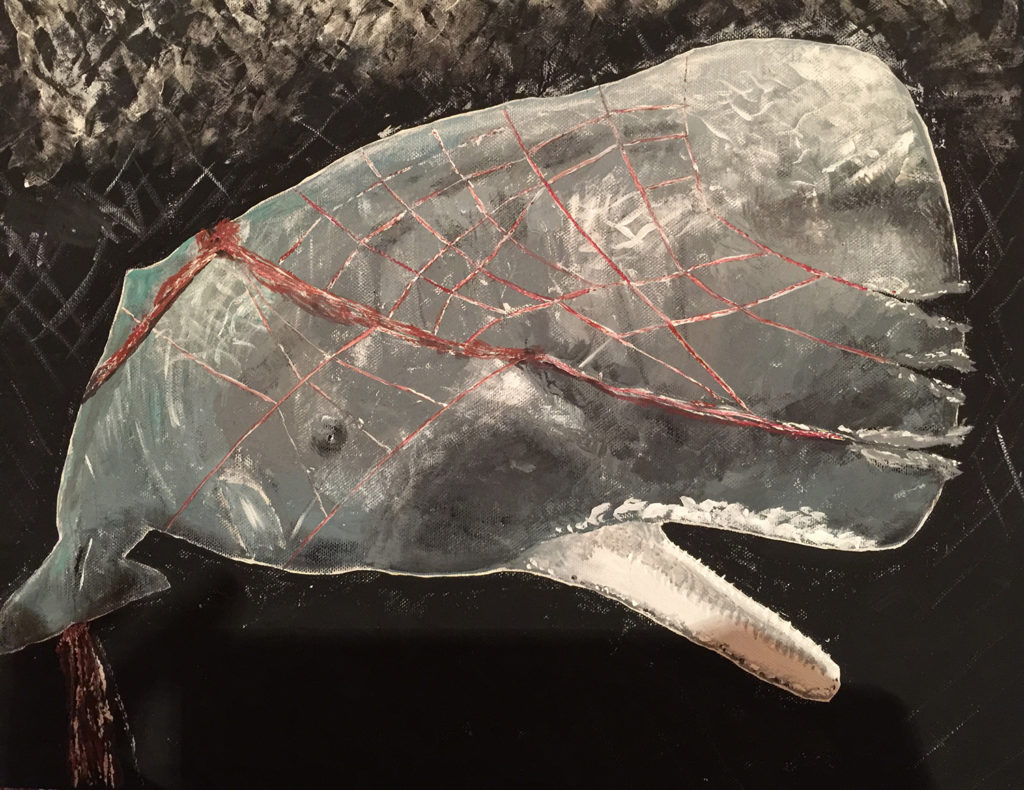
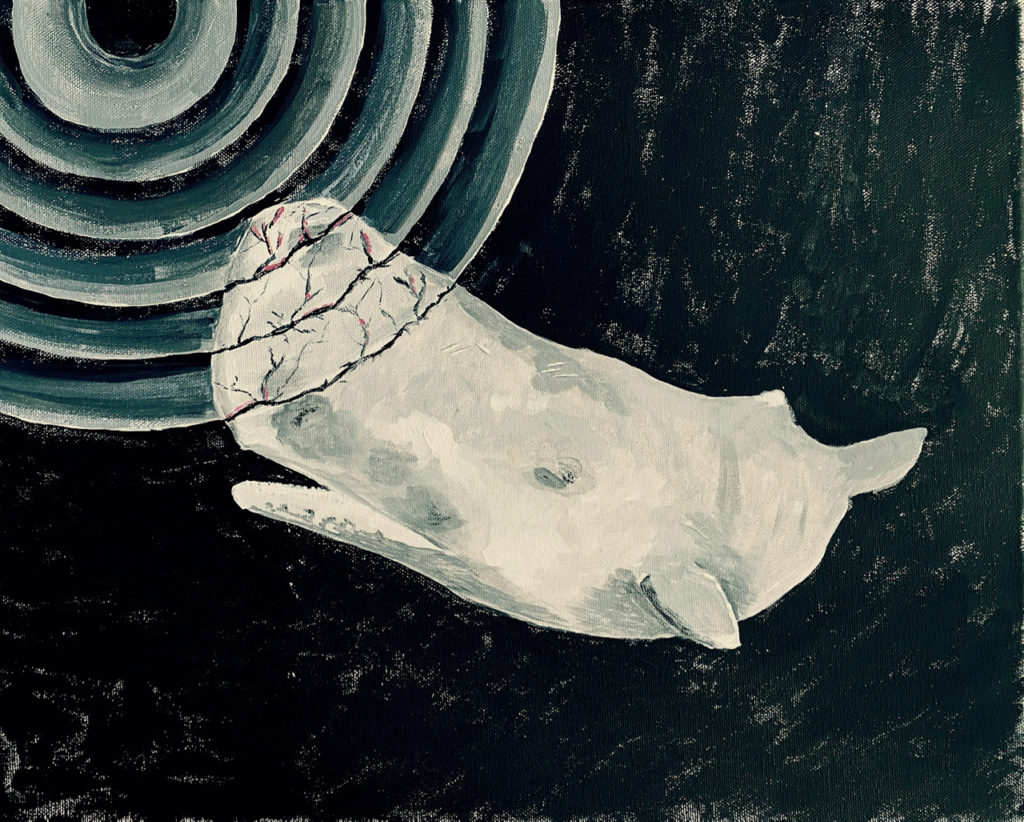
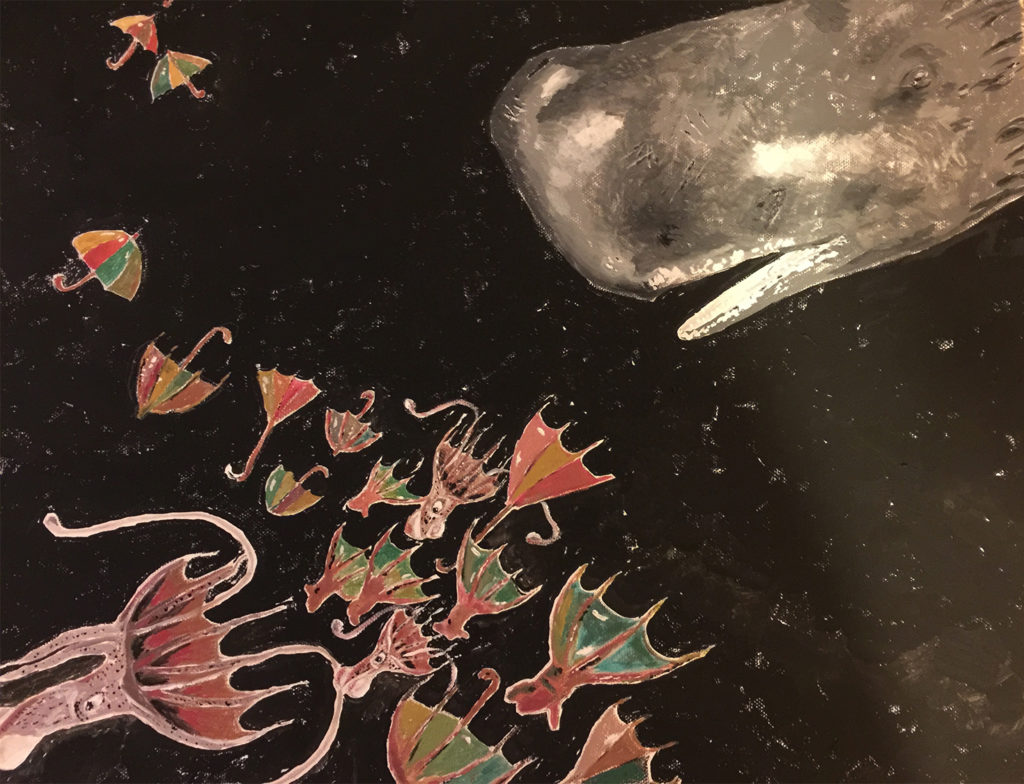
A further series of four paintings are aimed at pointing out the threats that whales (namely sperm whales) face every day:
- Collisions with ships (the painting was inspired by the whale called “Freddy”, which I sighted last summer, showing impressive deep scars on his back.
- Entanglement in fishing gear, mainly nets, including ghost-nets
- Underwater noise, especially LFAS sonar, which disrupts the whale’s behavior and causes great damage to its body up to death.
- Ingestion of plastic debris (in that painting umbrella squids, the sperm whales’ main prey in the Mediterranean, get confused with actual umbrellas, as a symbol of anthropogenic waste.